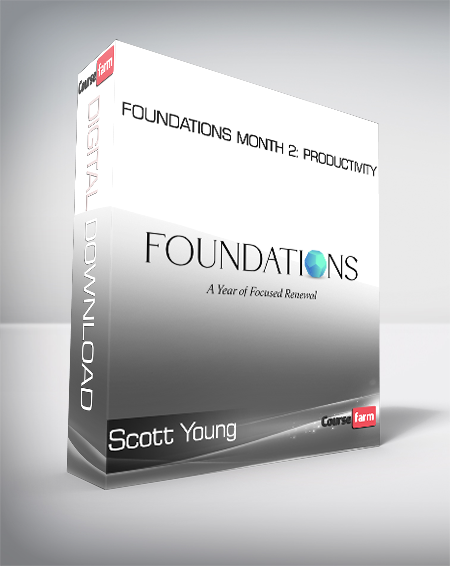Changing from inside
Changing from inside
Salepage : Preview
Arichive : Preview
When she was hired by a major, public health care institution, Cheryl H., a highly successful HR executive for a global company, seemed just right for the challenge. She came with great recommendations from a global firm that had stellar HR practices, and she had a high level of expertise, both in her profession and in the art of leadership. The HR situation at the health care institution, on the other hand, was a mess. That’s why the CEO hired her. She was supposed to clean up the mess, fast.
Eighteen months later, Cheryl was on the verge of quitting. She had tried to install an HR infrastructure, but her colleagues resisted fiercely, making life miserable for her team and for her. What went wrong? The problem was not her HR expertise or her leadership skills. She understood how to get things done. She knew how to be a leader. Her problem lay somewhere else.
Cheryl’s predicament is a classic example of a smart executive who has trouble dealing with change – the internal, personal change that’s needed to make a successful transition to a different job. Her problem was not what she needed to do; it was who she needed to be in her new organization. Yet she couldn’t give up her old self-image as a successful corporate leader and adopt the broader, more flexible self-image required for her new role and organization.
Self-image at work is a critical and often overlooked factor in the process of change. People change jobs and careers, but rarely do they think about changing their self-image. Perhaps that’s because self-image operates just below awareness, but still colours our perceptions, emotions and actions. Leaders who are not conscious of this fact tend to cling to their old self-image that keeps them from changing. There are plenty of examples — like the CFO who becomes a CEO and still acts like a numbers guy, not as a leader with a broad vision of the company.
Leaders are changing jobs and careers more rapidly than ever before, yet they and others advising them often fail to recognize that they must change their values, feelings and ways of thinking when taking on a new role. In other words, they must change their self-image. This article will describe self-image, why it so important to successful change and what leaders and organizations can do to transform a leader’s self-image in order to accelerate change.
Self image and change
The pressure to change jobs is mounting. Recent Hay Group research of the world’s most admired organizations for leaders shows that organizations are increasingly using job rotation as a primary development tool for their high-potential leaders. Yet promotions and lateral moves across industries are not the only driver causing executives to switch jobs. More pressure is coming from changing demographics. As the generation of baby boomers gets set to retire en-masse over the next decade, organizations are trying to accelerate the development of leaders from among their ranks to fill vacant roles. In one rapidly growing sales organization, leaders were moving up two and sometimes three levels because they desperately needed incumbents to fill mission-critical roles. In one case, a district manager who only two years earlier was promoted from a sales rep to team leader found herself responsible for leading the entire western region of the United States, managing six territory managers and with a revenue target of $ 44 million.
Sometimes, change is imposed by the impact of outside forces. Financial and technological changes have transformed the nature of work in many industries. As a result, many are finding that their work has changed forever. These same people often have a hard time adapting to their new roles. Howard Gardner, in his book Good Work, shows how the business of medicine in the U.S. has been transformed and how many doctors struggle with the fundamental shift in self-image that goes along with it. Many doctors entered their profession because they saw themselves as healers and care-givers and drew their self-esteem from seeing patients and developing their clinical skills. Fast forward several decades, where hospitals and insurance companies insist that a doctor see at least six patients an hour and penalize those doctors who fail to meet this goal. These doctors are aware of the growing gap between the image they have of themselves as caregivers and the image imposed on them by hospitals and insurance companies, as employees giving substandard care. They no longer experience doing “good work” – work that is responsibly done with high quality. In this case, the financial pressures of medicine have changed the nature of the job. When the job changes but people’s self-image does not, they become unhappy and disconnected from their work.
What is self-image?
Our self-image is multi-dimensional. We all have a common sense of who we are as an individual, an image that remains stable throughout our lives and that gives us a coherent sense of who we are. This is our core self image and it tends not to change much over time. It develops early in life and defines who we are – our deeply held beliefs and convictions, our personality traits and competencies, our intellectual strengths and weaknesses, our personal likes and dislikes. It is our source of self-esteem and gives meaning and purpose to what we do. As the chairman of a global consulting firm explained, his self-image hadn’t really changed over the course of his career. He strongly believed in his values. He shared that he has always guided by what his grandmother told him when he was a boy – “don’t ever do anything that would embarrass me” – and he claims he never has. Indeed, our core self-image is formed by our continuous interactions with significant people in our early lives, beginning with our parents and close relationships.
As adults, we take on different social roles and develop other self-images – a father or mother, a board member, a coach, a marketing director or a CEO. It is our professional self-image at work that can become such a barrier to successful change, because unlike our other social roles, our self image at work is the one that is undergoing increasing and constant change.
Our self-image at work is partly a function of what we do in our roles – sell, coach, write legal opinions, perform heart surgery — and the profession we identify with. Performing tasks competently provides a sense of accomplishment and mastery. The other part of our self-image concerns the values and principles of the profession with which we identify. Doctors take a Hippocratic Oath; engineers share the iron ring and are bound by a code of conduct. People identify with their professions, feel pride in what they do. It is both the behaviours and the values that make up our self-image that can make it so hard to let go of.
Changing our self image
When a leader’s self-image is aligned with his or her new business role, great things can happen. They are more energized and genuine, they reach out to others more to learn and seek feedback, they build support faster and they act with a greater sense of purpose and impact. When self image is not aligned with the role, or as Howard Gardner notes, the leader doesn’t recognize who is in the mirror, a recipe for trouble is created.
Hay Group research has found that when people change roles too quickly, they never have the time to solidify a new self image. Recently, we conducted a research study with 52 enterprise leaders at a global technology firm. We wanted to answer one question: What is the impact of job changes on the development of leadership competencies over the course of 10 years? The result: The more changes leaders had experienced, the less likely they were to develop competencies like ‘interpersonal savvy’ and ‘acting on values’ that are important for self image and ultimately, for leadership maturity.
So in this fast-moving world, what can you do to change your self-image and make your transition to a new role a successful one?
Know your current self-image: Before you can start to change your self image in your new role you have to know where you’re starting from. What lens do you look through when you think about your job? Starting by asking some simple questions can help to get at your self-image. What things in your job energize you; what is important to you? What things do people say to you or about you that make you happy or angry? What groups at work or outside of work do you belong to or wish you belonged to? Take a piece of paper and in 25 words or less write who you are in your role at work. Or list the ten things you value most as a leader. Pick the top two and write a story that illustrates each value in action. As you reflect on the answers, what does this tell you about your self image?
For Cheryl, understanding her current self image began with some direct feedback on how she was feeling about her job. It wasn’t pretty. She knew she was unhappy, but it wasn’t until she assessed herself in her current environment that it became clear that the situation was becoming untenable and that something had to change. The turning point in her story came when she began to see that she was blindly applying a corporate template to a fundamentally different organizational context. She wasn’t ready to talk solutions yet, but she was beginning to understand how her self image was being starved and also how it needed to grow.
Understand what the role requires. When we change jobs or organizations, our understanding of what our new jobs really require is often limited. When we first take on a new role, the only story we have to tell is the one formed by our past experiences or what our new boss told us to expect. It is often unsophisticated and overly simplistic. We understand our new roles from the perspective of the old one. Many vastly underestimate what the job demands really are and what it will take to be successful. The challenge is that we have to act in new roles before we fully understand what is required. Cheryl, for example, had a limited view of what she was walking into, believing that what her boss told her about the organization and that her job was to fix an HR system that wasn’t working. The job as described closely matched the self-image Cheryl had of herself. What she found out, however, was that she had vastly underestimated the differences between the new organization and what she had experienced in her former corporate environment. Decisions took longer, building consensus was much more critical and the organizational structure was far more complex than she had anticipated.
The lesson? Don’t believe what others tell you. Build a “thick” understanding of what the role really requires. To do so, it is important to get multiple perspectives on the role. But not all perspectives are equal and each stakeholder has a particular agenda. Linda Hill, in her book Becoming a Manager, illustrates the difficult changes new managers faced in moving from being an individual contributor to being a leader of others. Over time they realized that understanding their boss’s expectations, as well as those of their peers, was critical to their success in the first year.
What is holding your back? The next major task of changing a self-image is unlearning the behaviours that support it. The young adult has to give up the self-image of the adolescent, the married spouse the self-image of the single person, the executive vice president the self-image of the operational manager. There are two main reasons why it is so tough to change. First, we cling to old behaviours because they make us feel competent. The toughest thing for a new manager to do is to stop doing the work of her subordinates. At the same time, her new role requires her to practice behaviours that are new and with which she is not yet comfortable. She is now cut off from her source of self-esteem, and like the call of a distant siren, her old behaviours seek to lure her back. The Harvard psychologist Ellen Langer found in her research that people often have a tough time changing because they really value their old (negatively framed) behaviour, but under a different name. For example, a CFO now in a CEO’s role who is trying to be less controlling may really value compliance. Langer found that those trying to quit smoking were most successful when they considered the positive aspects of their addiction. Even though Cheryl changed organizations, she was unaware that, like an unwanted guest, her old self-image was sticking around and holding her back.
Changing self-image at work requires recognizing what you really liked about your old role. Make a list of all the qualities you are trying to change and for each one find a word that describes the same quality, but in positive terms. You may be surprised at what you find. Take the example of Rob, the “golden child” marketing vice president for an entrepreneurial bio pharmaceutical company, who was tapped for a new role heading up sales for the eastern United States. He discovered that, to make the transition from marketing to a larger role in sales, he needed to give up several behaviours that were responsible for giving him self-esteem in his old marketing role: “I learned not be the expert and to ask other people for help. I had to learn how to be silent and let others come up with their own answers. And I had to rise above and outside the details.” Over time and with the appropriate experiences, Rob created the foundation for a new and more complex self-image.
Rob says he was able to change the way he saw himself for three reasons: First, you have to have the will to change. Second, you need to be teachable – an ability to recognize your own weaknesses and willingness to hear feedback and ask for help. “The person giving you feedback is always right. Even if you disagree, there is always an essence that is right. Most people don’t get that.” Third, Rob notes, you need leaders to help you change.
Rob’s analysis illuminates Cheryl’s difficulties in changing from the inside. She had the will to change, and the ability to recognize her faults. But she needed to seek out the mentors to help her change.
Take action
1. Change your relationships. Other people play a powerful role in feeding our self image. From our parents and early mentors to our first boss, each reflects back to us the qualities, values and behaviours that determine how we see ourselves and provide the confidence that we can undertake the difficult tasks of a new role. They can also hold you back. Like a spider caught in a web, old social networks can serve to reinforce the very self-image and behaviours one is trying to change. The new parent who continues to go out with his drinking friends every weekend instead of being at home helping his spouse is reinforcing his old self-image. Rob found that early in his transition he relied too heavily on his marketing colleagues and not enough on establishing the new senior network in the sales organization. Cheryl, having moved from an achievement-driven private sector organization, had no one to reinforce her private sector values and what she did well. Like a child being raised in an orphanage, she had no one to feed her new self-image. As tough as it might be, leaders in transition have to rapidly build a new social network that will reinforce a different self-image and help them break the old relationships that will draw them back into old behaviours.
2. Fake it till you make it. At a crucial point in the film Shirley Valentine, Shirley, gathering the courage to leave her husband, says “From now on, when I look in the mirror, I am no longer Shirley Valentine, middle aged housewife beginning to sag a bit. I am Shirley the brave.” She puts on a new shawl and walks out the door. It may sound simple, but changing your self-image can be as straightforward as believing you are really playing the part, even if it feels awkward at first. In an extraordinary little study, Helen Langer divided one group of students into two. She told one group to pretend that they were pilots and had them perform several visual and spatial tests that had been completed by actual pilots. The second group was instructed to imagine that they were pilots (not pretend) and asked to complete the same tests. Remarkably, the second group’s visual acuity actually improved over repeated trials, whereas the first group’s acuity did not. Taking on a new mantel of leadership by believing you are the role you have taken on and imagining yourself as being successful can be a powerful tool to drive new behaviour. Over time, our true self-image will catch up.
3. Consider multiple roles. Doctors who define their self-image solely as being a healer may be limiting their ability to adapt. We can expand or create different self-images in a professional context, so the healer can also develop a self-image as a business person. In industries undergoing fundamental change, those who survive are the ones who can entertain different roles and come to value each one by building a new self-image around each of them. Rob never abandoned his self image as a marketing leader, but over time it played a secondary role. It is still there when he needs it.
The grand dialogue of the soul
The universe is made up of stories, not atoms, as the American poet Muriel Rukeyser writes. Our very memories are made up of stories. These stories form the core of self-image and they are deeply tied to how we think and feel about ourselves. They contain recollections of events that we have experienced, who we were with, our goals, what we achieved and the lessons we learned, and ultimately, what we believe and value. As Roger Schank, a pioneer in the field of artificial intelligence notes, the more we tell ourselves stories, the more our self-image is reinforced. One way to understand self-image in a work context is to think of it as the collection of stories we tell ourselves about our role. As we have seen, the biggest challenge leaders have in changing their self image is that the story they bring in to their new roles is often narrow and short. Over time, as they slowly gain experience, a more coherent self-image forms. In order for leaders to change then, they have to let go of their old stories to create new, more robust ones that are aligned with the future demands of their new role.
Delivery Method
– After your purchase, you’ll see a View your orders link which goes to the Downloads page. Here, you can download all the files associated with your order.
– Downloads are available once your payment is confirmed, we’ll also send you a download notification email separate from any transaction notification emails you receive from NLPlib course.
– Since it is a digital copy, our suggestion is to download and save it to your hard drive. In case the link is broken for any reason, please contact us and we will resend the new download link.
– If you cannot find the download link, please don’t worry about that. We will update and notify you as soon as possible at 8:00 AM – 8:00 PM (UTC+8).
Thank You For Shopping With Us!













